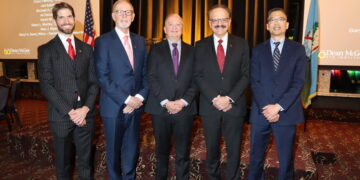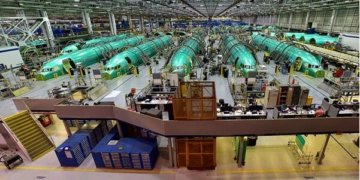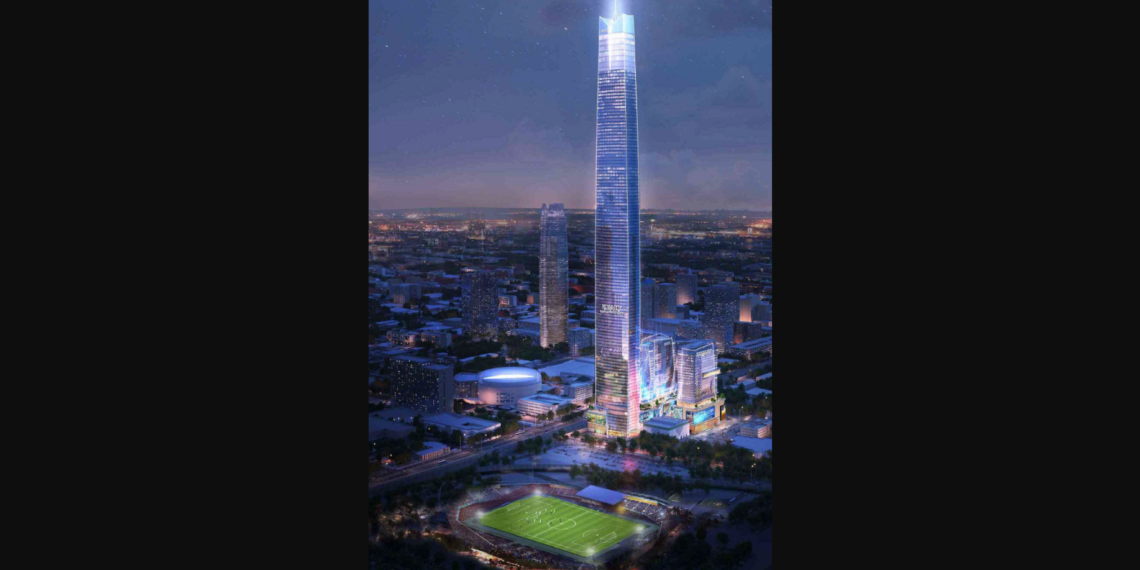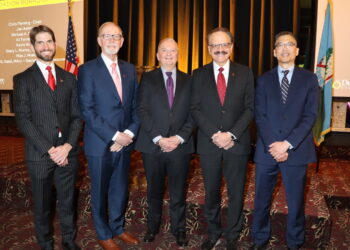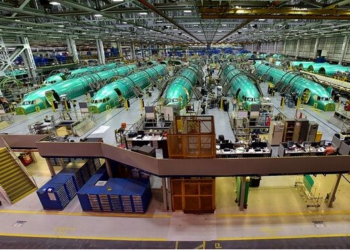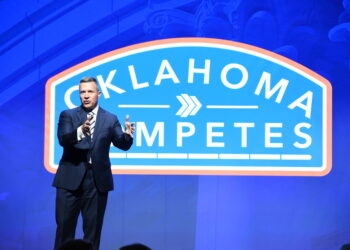OKLAHOMA CITY (OBV) – A planned super tall skyscraper is the talk of Oklahoma City, and word of its development has spread across the nation and even to the other side of the world. First, it was intended to become the second tallest skyscraper in the nation. Now, the plan is to make it the very tallest.
You likely have heard about The Boardwalk at Bricktown, the planned development for the city’s popular Bricktown area.
Ambitious seems too modest of a word for this vast project.
The planned development is comprised of three towers, each 345 feet tall, and a fourth super tower that will ascend a staggering 1,907 feet into the furthest reaches of the Oklahoma City skyline. If built, it would surpass the nation’s current tallest building, One World Trade Center, which stands 1,776 feet high in New York City.
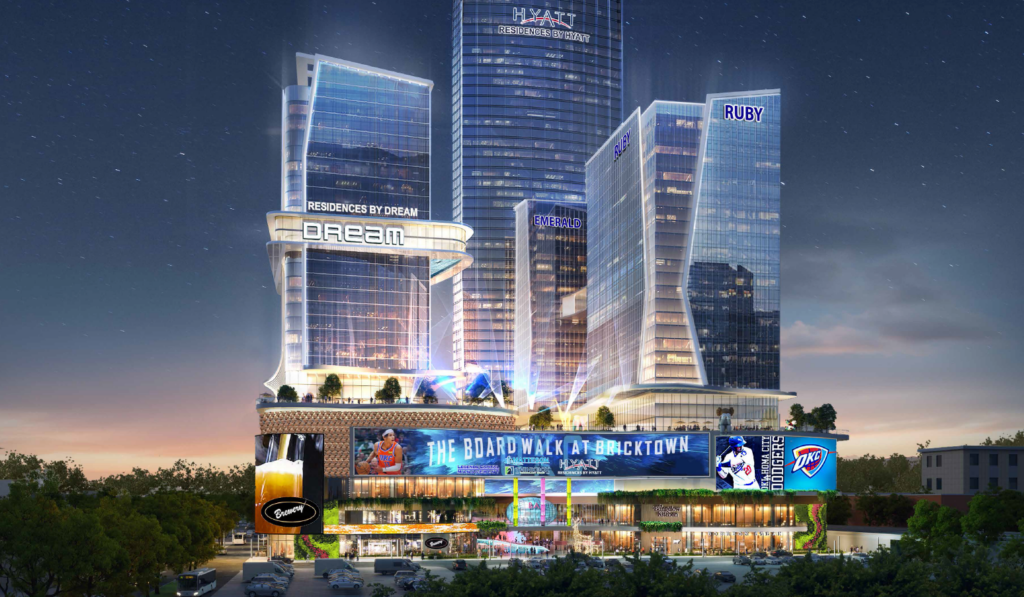
The 5 million square foot Boardwalk at Bricktown is planned to include the following features:
- A 480-key Dream Hotel by Hyatt with 85 residential serviced condominiums in the Dream Tower;
- An additional 350-key Hyatt hotel with 100 serviced condominiums in the Legends Tower;
- 1,907 residential units ranging from luxury to affordable;
- 110,000 square foot retail, restaurant and entertainment area;
- Workforce development center for the community at the street and second levels; and,
- 938,000 square feet of below-grade and above-grade parking
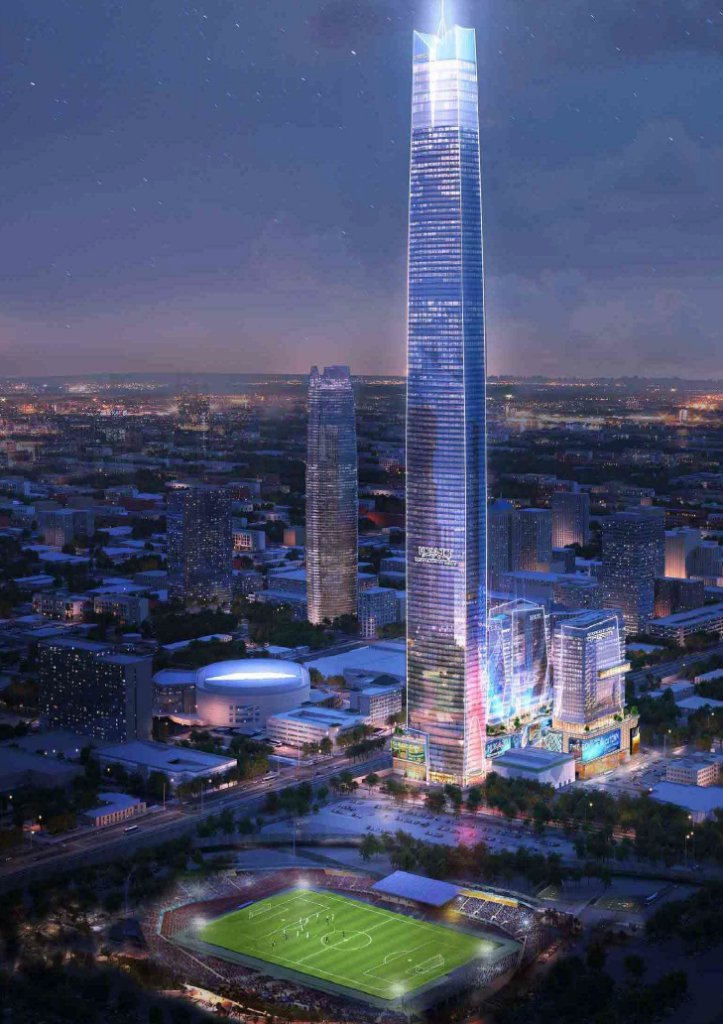
The super skyscraper’s top floors will include a public observatory, restaurant and bar where visitors can gaze upon the Oklahoma City sprawl.
The Boardwalk at Bricktown design also includes a 17,000 square foot lagoon surrounded by a boardwalk.
All in all, the mega-development is expected to span more than 3 acres and contain over 2 million square feet of residential, hospitality, retail, dining and entertainment.
But not a drop of concrete has been poured nor a single steel beam has been erected for the would-be Boardwalk at Bricktown. It is a grand aspiration that the developer, Scot Matteson out of California, is trying to manifest into reality as he and his team navigate official city channels.
“Oklahoma City is experiencing a significant period of growth and transformation, making it well-positioned to support large-scale projects like the one envisioned for Bricktown,” said Matteson, the CEO of real estate investment and development company Matteson Capital. “We believe that this development will be an iconic destination for the city, further driving the expansion and diversification of the growing economy, drawing in investment, new businesses, and jobs. It’s a dynamic environment and we hope to see The Boardwalk at Bricktown stand as the pride of Oklahoma City.”
The original plan was for the super tower to be 1,750 feet tall, but Matteson and architects with AO, the architecture firm that designed Boardwalk at Bricktown, requested a variance from the city in January to increase its height to make it the nation’s tallest building.
“We are excited to embark upon this pivotal undertaking with a carefully assembled team of talented and experienced architects and designers from within our ranks,” said Rob Budetti, AO managing partner. “Crafting a project of this significance is an honor, and the collaborative process with the City, Matteson Capital, Hensel Phelps, and a top-notch team of engineers, consultants, and development partners has been exceptional. Managing the intricacies of such a project, ensuring seamless integration of all components, is a significant challenge. Fortunately, this aligns with one of AO’s core strengths.”
Camal Pennington, chairman of the Oklahoma City Planning Commission, asked Budetti a question that is on the mind of many Oklahomans during the April 11 Planning Commission meeting.
“How are you intending to build a tower this tall in the wind and storms and tornadoes of the great state of Oklahoma,” Pennington asked.
“Basically the way it works for these super tall towers – you’ve seen them all over the world in high earthquake zones, high wind zones – there’s several firms that specialize in analyzing the forces that will be imposed from a tornado or any wind event, and [those firms are] able to calculate those forces the same that we calculate the forces from a seismic activity or an earthquake,” Budetti said. “So, those forces are then given to our structural engineer, Thornton Tomasetti, who did Devon Tower here and three of the five tallest buildings in the world. And with those design loads no different than what we have to design for seismically, they will design the building to withstand the loads that are given to them as design parameters.”
Construction for the smaller towers will take 24-30 months, and the skyscraper’s construction will require an additional 12 to 18 months, Budetti said.
“I think the timing of the tall tower is still to be determined, whether it is built at the same time or in a phased approach. That [determination] will come from the financing conditions,” Budetti said.
The Oklahoma City Planning Commission approved the developer’s request that the skyscraper have no cap on its height during the April 11 meeting, but did not approve LED signage that developers hoped would adorn the building. The additional height still requires approval from the City Council.
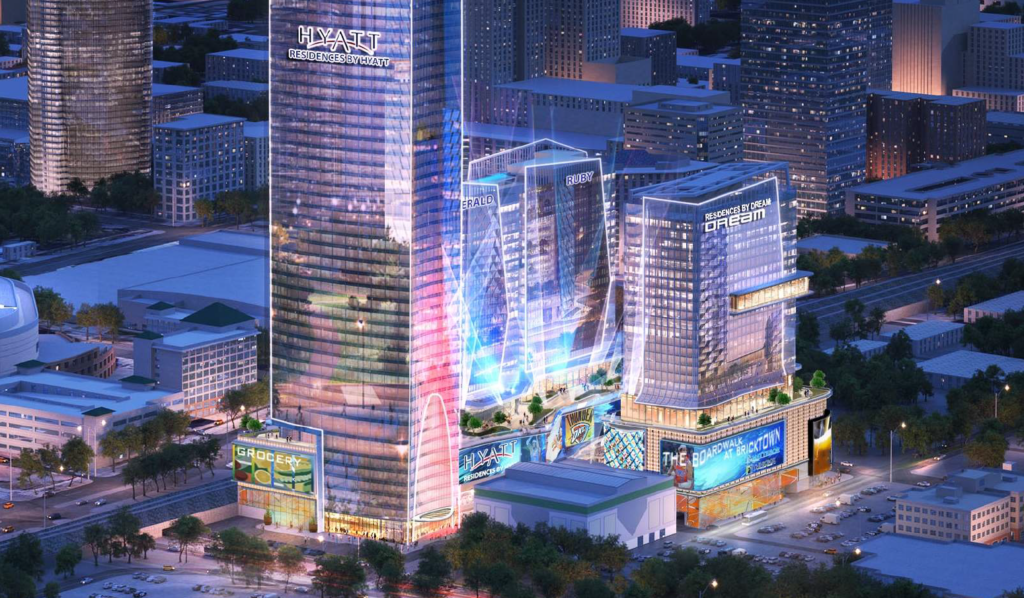
Kenton Tsoodle, president and CEO of The Alliance for Economic Development of Oklahoma City and executive director of the Oklahoma City Urban Renewal Authority, spoke with Oklahoma Business Voice about the origin of The Boardwalk at Bricktown development.
Landowner Randy Hogan began the thought process that led to the Boardwalk at Bricktown idea. Hogan developed much of the lower Bricktown area and had a deal with the Urban Renewal Authority to develop the area over time, according to Tsoodle.
“And there was really this one last big parcel to develop,” Tsoodle said.
Hogan reached out to Matteson about developing the undeveloped parcel in Bricktown, Tsoodle said.
“It’s been more than a year that we’ve been working with these folks and just sort of listening to what their concepts are, thinking about what sort of incentives and things we might potentially put together on the site,” he said.
The initial hope was to build a dense urban development in the parcel.
“They started looking first at the Dream Hotel concept and how a hotel might fit in. And then that’s where I think ideas started turning towards, ‘Well, there’s really a need for more residential property downtown,’ and then, ‘Okay, high-rise residential,'” Tsoodle said. “I don’t think when we first started did we contemplate this much density. We had been talking to other folks about potential five to eight story building. So, when we started talking about 15 to 25 story buildings, the nature of it began to change.”
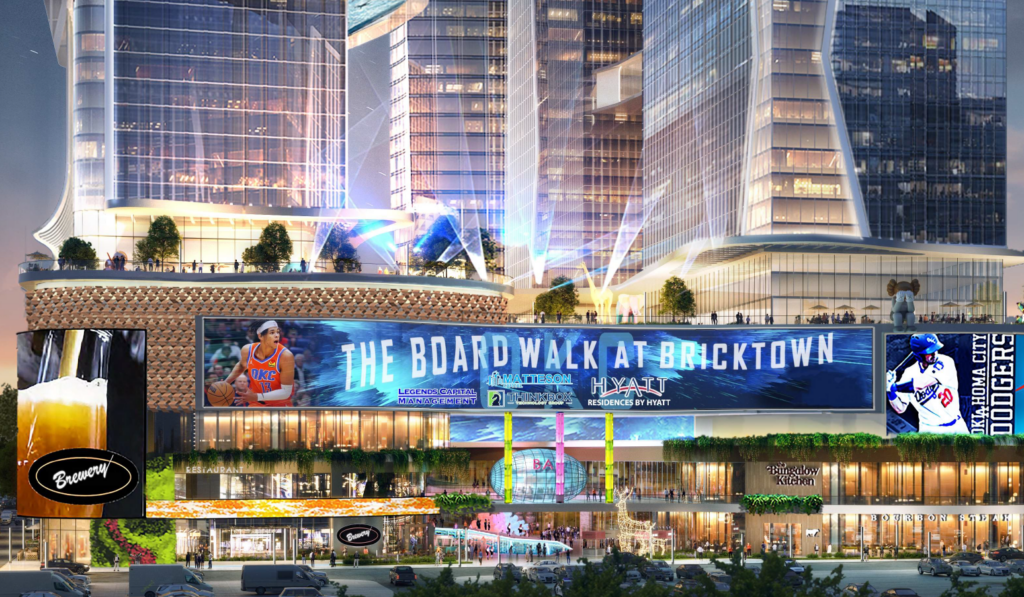
Tax increment financing incentives were approved for the development that are no risk to the city.
“Basically, if they don’t build anything, they don’t get a dime,” Tsoodle said.
The super skyscraper was not part of the original development agreement between the city and the developers.
“And what’s contemplated in the deal is that they would provide at least 900 apartments, some parking associated with that, restaurant and other amenities, a water feature – that’s really what’s in our agreement that they have with the City of Oklahoma City,” Tsoodle said. “Anything beyond that, like this large tower concept that they put out, it’s really in their court now. And I know that tower is very aspirational, but the original plan contemplated two to three residential towers, a hotel, restaurants and these different amenities. But really all that they’re required to do to get their incentives would be 900 rooms, $500 million worth of development.”
Tsoodle said he felt a level of surprise, a level of awe and a level of skepticism when he learned that plans for the development included a super skyscraper.
“The thought process from my side would be, ‘Why would we limit their dreams?’ If that’s something that they can really make work and the market will allow to work, why would we limit that? But at the same time, being realistic, something like that would be very hard to do,” Tsoodle said.
The development, if fully cleared by the city to proceed, will be built out in phases and adjust in size according to how the market absorbs it, Tsoodle said.
Most of the apartments in the development will be higher end, upper-scale housing, but the first phase of the development is intended to have some workforce housing with a lower price point, Tsoodle said.
Demand is growing for urban lifestyle and downtown living, according to Tsoodle.
“I think as there’s more and more amenities and things developed downtown, it drives more demand for that sort of thing. It’s an almost circular thing that you drive more demand, more folks end up downtown and then there’s more amenities and things that can be supported. It’s sort of a self-fulfilling cycle there,” Tsoodle said. “But we do think there’s demand. How much and at what price point, I think those are things that the developers and the folks who operate it have to ultimately figure out.”
The city has provided the project the aforementioned tax increment financing, but it is up to the developer to obtain the funds to build The Boardwalk at Bricktown, Tsoodle said.
The development is expected to create around 1,800 new jobs – half permanent, half temporary. The temporary jobs will mostly be construction, and the permanent will mostly be hospitality service industry type jobs, Tsoodle said.
Oklahoma City currently has one skyscraper – Devon Tower, standing 844 feet – and it’s possible the city can have many more a few decades down the line, Tsoodle said.
“Oklahoma City is now the 20th largest city. It’s the 41st largest metro area in the country. We’re really on a growth trajectory. And I do think that if you look at other cities, once a few of these high rise residential properties start taking off, it creates some demand that can calm some things that help make the second and third and fourth [towers] easier [to develop],” he said. “If we continue to have the growth we’re having in population, I could see 30 years out we have multiple residential towers. How big are those? I don’t know. Are we talking 10 stories? Are we talking 20? Are we talking 50? I don’t know, but I do think the skyline will be changing in the next 30 years.”


